Uganda is nothing short of a remarkable country. It is often referred to as the Pearl of Africa – and a pearl it is. The country has fantastic natural sceneries and a rich mosaic of cultures and tribes. From the highest mountain range in Africa — the Rwenzori Mountain Range — to the mighty Nile, the longest river in the world, Uganda is filled with remarkably captivating beauty, exclusive lush landscapes, and is inhabited by the friendliest of people.
Located where the West African jungle meets the East African savannah, it’s only natural that Uganda plays host to a wide variety of flora and fauna. Over half of the world’s endangered mountain gorillas, more than a thousand bird species, and hundreds of mammal species found in sanctuaries reside in Uganda.
Uganda is also home to many lakes, including the world’s largest freshwater, Lake Victoria, which is responsible for regulating the temperature in the region. Interestingly, the country’s climate varies depending on where one lives. To the south, it is wetter, with rains mainly throughout the year. Northern Uganda has a dry and sunny climate.
That said, if you are looking to move to Uganda, here are 10 towns you can consider. Starting life in a new town can be quite challenging, but with this guide, you’ll be halfway done.
-
Kampala
Kampala is Uganda’s capital. It is also the largest city in the country; one that occupies a series of hills dating back to the pre-colonial period. The city has continuously been ranked by Mercer – a New York-based consulting firm – as East Africa’s best city to live in ahead of Nairobi and Kigali.
History and Population of Kampala
Originally, Kampala referred to the present-day Old Kampala hill, where Fort Lugard was located. It was the initial administration headquarters of the British colonial authorities in Uganda Protectorate. The name “Kampala” originates from the translation of the “Hill of Impala” as Akasozi ke’Empala.
This referred to Fort Lugard, King Kabaka’s hunting reserve, which had several species of antelopes including impalas.
The fort remained the British colonial administrative headquarters until 1905 when it was moved to Entebbe. In 1962, however, Kampala, which had been a municipality since 1949, became the capital of independent Uganda.
As of 2019, Kampala had a population of 1,680,000.
Cost of Living in Kampala
As far as lifestyle goes, Kampala does have pretty much everything you’ll need for a good standard of living. The majority of the city’s occupants are the middle class whose per capita daily consumption expenditure is between $2-$20 (Shs. 7,300 – Shs. 73,000) in purchasing power parity (PPP) terms.
This explains why Kampala is among the cheapest cities to live in. Based on Living Cost.org statistics, the monthly cost of living in Kampala for a family of four is roughly USD 1675 (approximately 5,909,148 Ugandan shillings). This data, however, is largely based on the prices crowdsourced by users. The actual cost may vary.
Among the most affluent neighborhoods to live in Kampala include Muyenga, Kololo, Ntinda, Munyonyo, Buziga, Kisugu, Bugolobi, Bbuga, Bunga, among others.
Why Live in Kampala
Kampala is a metropolitan city with happy culturally diverse people. The most significant features of the city are split into several “hills”, which have historic importance. These hills are home to the Kasubi Tombs where the former Kabakas are buried, the Headquarters of the Buganda Court of Justice.
Kampala also offers easy and fast commuting options, which makes going to and from work less of a hassle, as well as ready markets, shopping malls, and plenty of fresh produce!
The city has plenty of restaurants including Asian Fusion, The Lawns, Khana Kazana, among others where you can enjoy a variety of cuisines including western meals.
Kampala is also renowned for its bubbling nightlife. It ranges from laid-back bars to super clubs. There are plenty of places to have a good time in the evening. Club Silk, Rouge, and Angenoir Mystique are some of the top attractions in town.
2. Kira
Kira is a city near the capital of Uganda, and is nicknamed the ‘dormitory of Kampala.’ The reason is that many people only inhabit Kampala during the day but only retire to their homes in Kira at the close of business. It is located 15 kilometers from the Central Business District of Kampala and is the second-largest urban center in the country, after the capital.
History and Population of Kira
Kira’s fast urbanization began around the 1980s as a response to the rapid growth of Kampala City. Today, it is the largest town in Uganda by population, which has grown at a relatively faster rate compared to the country’s average over the past 10 years.
The Uganda Bureau of Statistics (UBOS) estimated that the population of Kira Town is approximately 462,900 people. The body noted that the town’s population grew at an average rate of 6.68 percent annually, between 2014 and 2020.
Cost of Living in Kira
Residents of Kira township come from all walks of life. As such, you can find neighborhoods inhabited by upper-middle-class individuals as well as middle-class populations working in the municipality itself and Kampala.
In regards to housing, Kira has the quality and stock residences available for the population. This is partly due to the availability of good space and affordable homes, even in upscale areas. The majority of Kira’s inhabitants are found in various suburbs including Kireka, Najjera, Kyaliwajjala, and Kirinnya, among others.
The monthly cost of living in Kira, for a family of four, is estimated at around USD 1262 (approximately UGX 443,9760).
Why Live in Kira
Apart from its proximity to Kampala city, Kira holds some historical significance in Uganda. The Catholic Basilica of the Uganda Martyrs is found in Kira. This is the place where the majority of the 22 Catholic Uganda Martyrs were burned alive. Three popes have so far visited the place.
The town is also home to Kabaka’s Palace at Kireka Hill and Mandela National Stadium, the largest stadium in Uganda, making it a favorite place for sports enthusiasts.
Living in Kira town can be a very relaxing pursuit. All the fancy hotels and restaurants, shopping malls, and markets in Kampala are easily accessible from Kira town. That means there is no shortage of fun moments including some thrilling late-night partying.
The town has a long-term community, and as such, you will find many established families living with their children here, thanks to the availability of many schools catering to their needs,
3. Gulu
Gulu is a town found in Northern Uganda, formerly under the greater Acholi District. It is perhaps famous for being a garrison town. In the 1980s and 1990s, Gulu played host to many internally displaced persons (IDPs) fleeing the Lord’s Resistance Army (LRA) conflict in northern Uganda.
When the conflict came to an end in 2006, the municipality quickly became a migrant destination because of the security it provided and the economic opportunities available in the post-conflict period.
Today, it is an administrative town and a commercial hub for northern Uganda.
History and Population of Gulu
Historically, Gulu was a town of the displaced. During colonial rule, part of northern Uganda was not developed much. Therefore, many local people were deployed to fight in the first and second world wars. In the due course, a lot of Rwandese, Congolese, and Sudan’s refugees were influenced to come and settle in the area.
When conflict broke out in South Sudan in 2013, Gulu again became an important destination for refugees fleeing the conflict and this explains why it still has refugees.
The town, according to the 2014 population census, had a population of 152,276.
Cost of Living in Gulu
Many people in Gulu work in the informal sector. But being one of the fastest growing towns in Uganda, Gulu holds a great economic potential that is attractive to both locals and foreigners.
The cost of living is cheap, and moving from one place to another within the town is a bit shy of 0.60 US dollars. The real estate sector is still budding in the city, and it offers a great opportunity for any investor looking to venture into the business.
The economic activities done in Gulu include agriculture and plenty of food including potatoes, sunflower, cassava, beans, groundnuts among others are grown. The town is also well established with modern services like banks schools and health centers.
That said, the monthly cost of living for a family of four in the city is approximately 1154 US dollars, or an equivalent of 4,075,450 per month.
Why Live in Gulu
Whether it is for a quiet life, an investment opportunity, tourism, or the beautiful people, you can find it in Gulu. The town is linked by road and railway with Lira, Soroti, and Pakwach, and it even has an airport as well!
Living apartments are cheap, and going out with friends for dinner or a drink gives you the best value for your buck. There’s the luxury Churchill Courts Hotel, Northern Pearl, Bomah Hotel, and a few others.
If you are a tourism enthusiast, the short drive to Murchison Falls National Park with lions, elephants, hippos, giraffes, and antelopes will thrill you beyond your imagination. In addition, you can take boat cruises on the Nile to see animals and go on game drives.
4. Jinja
Jinja is a budding little city in eastern Uganda that’s risen to become the second busiest commercial center in the country after the capital of Kampala. Over the years, it has rapidly grown to become the adrenaline capital of Uganda.
Jinja is famous for its location on Lake Victoria, right at the source of the world’s longest river, the Nile – the symbol of life for all the countries it travels through before reaching Egypt. It is also one of the largest producers of electricity, which is exported to Kenya, Tanzania, and the Democratic Republic of Congo (DRC).
History and Population of Jinja
Jinja was primarily a fishing village that benefited from its unique location along long-distance trade routes. Its history can be traced back to 1901 when it was a British administrative center.
The name “Jinja” originates from the language of two local tribes—the Baganda and the Basoga—that reside on either side of the River Nile. A description of what Jinja looked like earlier in history can be found in the notes of John Hanning Speke, the first European said to lay eyes on the source of the Nile.
According to the 2020 population estimate, Jinja has about 300,000 people.
Cost of Living in Jinja
Jinja being the second-largest economy in Uganda is largely in part due to the factories located in the town. One of the largest sugar factories in the region is also located in Jinja.
A large population of its inhabitants works in factories and other nearby industries. The city center mirrors a mixed influence of Western and Indian architecture and consists largely of low-density commercial buildings laid out in a grid.
The majority of the population in Jinja is termed as the “working poor population” and the average income for households is estimated at USD 100, which is about 352,932 Ugandan shillings.
With this estimation, the cost of living in Jinja is less than that of Kampala. Luckily, there are plenty of basic facilities including education, banking, and communication as well as worship places. Overall, Jinja is a small quiet, and safe town, with plenty of leafy suburbs to live in.
The monthly average cost of living in Jinja for a family of four is estimated at USD 1242, approximately 4,387,398 Ugandan shillings.
Why Live in Jinja
There are plenty of reasons to live in Jinja, and this is the reason why it is popularly known as the “adventure capital of East Africa.” It has a ton of adrenaline-pumping activities.
It is also renowned for adventure sports such as white-water rafting, horse riding, quad biking, bungee jumping, to name a few. The town also hosts a casino, an 18-hole golf course, and a health club.
The city has a bustling nightlife, one that is only second to that of Kampala. Many revelers from the capital drive there over the weekend for an alternative party scene. It has lots of bars and clubs including Jinja Sailing Club, the Spot 6 Bar, and Babez bar, among others. Beautiful hotels where you can enjoy a good night’s sleep include the Bilkon Hotel or Casa Mia Baliidha.
5. Entebbe
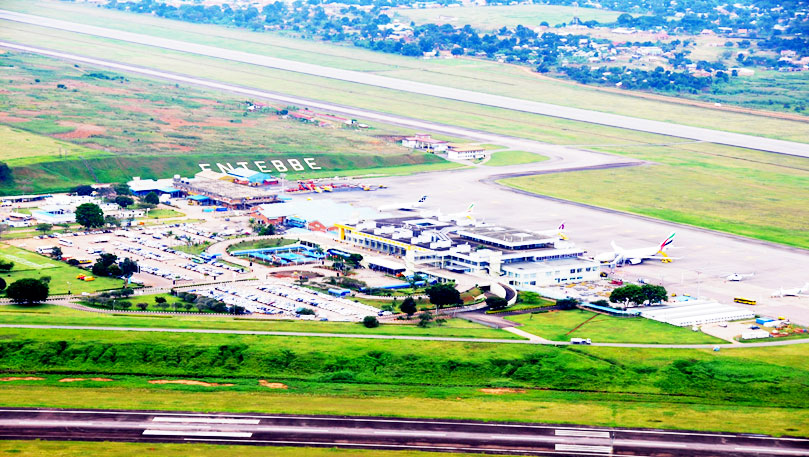
Located on a Lake Victoria Peninsula, Entebbe is an iconic city that offers a perfect introduction to Uganda. It offers bustling markets, relaxed beaches, and friendly people.
Entebbe is mostly famous for the July 4th, 1976 Israeli commando raid where more than 100 Jewish hostages held on a hijacked Air France plane were rescued. It also hosts Uganda’s State House where the president resides.
History And Population of Entebbe
Entebbe was founded in 1893 as a garrison post and it served as the British administrative center of Uganda until 1958. During these times, Port Bell became Kampala’s harbor, which is now only used for jetties. There was a time when it was used by ferries of Lake Victoria.
The name “Entebbe”, means “seat” in the local Luganda language. It was probably named so because it was the one place where Baganda chief sat to adjudicate legal cases.
Currently, Entebbe has a population of 69,958, according to the national population census of 2014.
Cost of Living in Entebbe
Life in Entebbe city is characterized by a group of people from the middle-income group. Typically, a person working in Entebbe earns up to 2,070,000 Ugandan shillings per month. However, the salary range is between 524,000 UGX (lowest average) to 9,240,000 UGX (highest average, the actual maximum salary is higher), as indicated by Salary Explorer.
The cost of housing in Entebbe, however, is higher than the average in Uganda. Nevertheless, prices of things such as transport, rent, and fresh produce are relatively low. Housing and accommodation also vary greatly across neighborhoods such as Kiwafu, Lugonjo, Lungo, Banga, Kitongo, among others.
The monthly average cost of living in the city for a family of four is USD 1296 (approximately 4,578,155 Ugandan shillings.
Why Live in Entebbe
If you regularly want to wake up and experience or indulge in a ton of boating activities in the world’s largest tropical lake and the second-largest freshwater lake, Entebbe is your home.
The city is also a gateway point for those that love visiting the different islands on Lake Victoria, especially Ssese Islands, which are 84 in total. With the Entebbe International Airport located in the city, you can go anywhere in the world without having to travel far distances to get airlifted.
Nightlife, shopping, tourism, and quality of life is top-notch (well, not by western standards) but it certainly caters for all your lifestyle needs.
The city inspires both local and international tourism. One can visit Ngamba Island, which is thought to be the world’s largest chimp sanctuary. The island is only 90 minutes away by boat although it varies with the type of boat one uses.
In a nutshell, Entebbe is one of those lucky cities in the world where one can swim, walk, run, fly across the equator.
6. Tororo
Found in Eastern Uganda, Tororo is a town mainly known for being one of the most thunderous places in the world. Thunder occurs on more days in the town than anywhere else.
This phenomenon has been associated with the region’s richness in minerals. Tororo has one of the highest phosphorus deposits in the world.
History and Population of Tororo
The history of Tororo town can be traced back to when it was a conduit and military base for British colonialists, during the 1st and the 2nd World Wars. It was used as a recruitment center and a staging ground for expeditions to North Africa, especially through Benghazi in Libya.
As such, it attracted developments in the years that followed, which formed Tororo town. The majority of the buildings in the town were constructed by Indians in the 1920s and 1930s.
Over the years, Tororo town grew to become one of the industrial urban centers in Uganda. It is the largest producer of cement in the country.
In 2014, Tororo’s population stood at 41,906, according to Uganda’s national census.
Cost of Living in Tororo
Despite its industrious nature, Tororo’s economy, like many up-country towns in Uganda, is relatively weak. However, the district where it is located is rich in producing cotton, onions, cassava, potatoes, beans, and sunflowers among others. That is aside from mineral production.
Therefore, food is not only aplenty but cheap as well. Commuting within and outside town is cheap. Town service matatus charge less than a dollar per journey. Add this to affordable housing in any of the town’s neighborhoods and you got yourself a quality standard of life in Tororo.
For a family of four, the monthly cost of living in Tororo stands at 1248 US dollars, an equivalent of about 4,407,419 Ugandan shillings.
Why Live in Tororo
If you fancy life in an industrial city with lots of business opportunities, you can’t go wrong with Tororo. It has plenty of affordable places to stay and you can dine and wine in various restaurants and hotels such as the Meritoria, Mamikki, Green Meadows, Piedmont Hotel, Kanfi Hotel, and Rock Classic Hotel among others.
Some of these hotels are renovated establishments dating back to the Victorian era. The most significant tourist attraction in the town is the Tororo rock, well, hello rock climbers!
For an immersive nightlife in Tororo, there are quite a few places including Da Place Club, Club Lavender, and a few others. Perhaps what will get you sold is the friendly culture and people. Quite a charm!
7. Mbale
Mbale is a town in the Eastern Region of Uganda that was recently elevated into city status through the country’s motion to create 15 new cities. It is a quiet agricultural town on the foot of the dormant volcano, Mt. Elgon.
The city is famous for the popular Kadodi dance in Uganda and is characterized y a ton of tourism opportunities.
History and Population of Mbale
By the year 1900, the area known as Mbale was uninhabited and is comprised mainly of grasslands, forests, and marshlands. In 1903, the British administration offices were moved from the then headquarters in Budaka to Mbale.
The place was gazetted as a regional center in 1906, and by 1951, the town had built modern Offices. After Uganda gained Independence in 1962, Mbale was the first town to be granted Official status as an urban Authority.
The town is now a municipality supported by a fast-growing population and private and as well as public sectors. In 2014, the national census authority estimated Mbale’s population at 96,189.
Cost of Living in Mbale
Mbale is a relatively affordable town in Uganda. Life is cheaper than the country’s capital, and it attracts various price points in terms of housing. The town has some decent, serene neighborhoods that offer beautiful sceneries and an ambient life.
Depending on one’s needs, they can find cheap apartments or luxury homes. Some areas are costly as 500,000,000 Ugandan shillings. You can find good homes in Bulujele, Bunkoko, Busamaga, Wanale, among others.
Although the town is still developing, the cost of living can be likened to that of Entebbe, but slightly lower. Food is cheap and is mainly sourced from nearby farms, plus its proximity to the Kenyan border facilitates easy to trade and plenty of growth opportunities.
According to LivingCost.Org, the monthly cost of living for a family of four in Mbale is approximately USD 1162, an equivalent of around 4,103,703 Ugandan shillings.
Why Live in Mbale
Mbale has a beautiful climate. Far from the bustle and the busy life of Kampala, it offers a more relaxed environment with lots of green. It was once considered one of the cleanest towns in Uganda, and a visit to the place can tell you why.
Although the city has an industrial park, it isn’t one like those found in developed countries marred by the nuisance that is pollution. It is mostly agricultural, given that the region is also famous for Arabica Coffee.
The city has an extraordinary amount of beautiful sceneries including intuitive landmarks, some financial, some educational municipal but all are a representation of how much Mbale has progressed over the years.
For culture, food, education, and entertainment, Mbale offers riveting sites such as Mbale Central Market, Mbale Municipal Stadium, Livingstone International University, Islamic University in Uganda, to name a few.
8. Arua
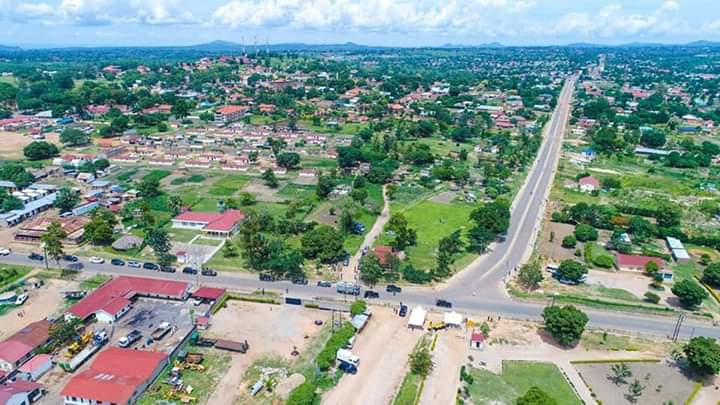
Arua is a town found in North-Western Uganda, 19 kilometers from the Democratic Republic of Congo border. The city is famous for being the hometown of the former president of Uganda, Idi Amin.
History and Population of Arua
Arua was the headquarters of the whole region west of the Nile River, which was, until 1912, known as the “LADO ENCLAVE”. This region was under King Leopold the II of Belgium.
The southern part of the Lado Enclave was, however, transferred from the Anglo-Egyptian ruled Sudan condominium to Uganda in 1914. It was during this time that the colonial administration conferred township on the current Arua municipality and made it the center of administration for the new district.
As of the 2014 census, Arua had a population of 61,962.
Cost of Living in Arua
It doesn’t take much to live a quality life in Arua, especially if you are a salaried individual. Affording basic amenities in the town isn’t far-fetched, especially since the town and the nearby urban centers hold a weekly market that sells lots of local produce.
Transport from one place to another within the town is less than a dollar a trip and houses are quite affordable. Depending on your preference, you can get an apartment that matches your needs.
Homes are affordable in Arua. Being one of the developing cities in Uganda, it has a few settlements that are considered affluent in regions such as Mvara, Bazaar, Awindiri, and some parts of River Oli.
Overall, the monthly average cost for a family of four is 1249 US dollars or about 4,410,950 Ugandan shillings.
Why Live in Arua
Arua is located in a pleasant region with lots of scenic beauties. It packs a ton of facilities including a golf course, banks, supermarkets, local markets, and more. It even has an airport!
Hotels such as Café Cosmo offers delicious cuisines whereas, for a little bit of nightlife, you can visit Vino Lounge and revel with other fellows, or Oasis 247 bar for some beer!
From Arua, you can access beautiful scenic spots like the River Nile- the longest river in the world, Murchison Falls National Park, and large-scale Tobacco plantations. The town also has some ancient colonial buildings and an Indian temple for that matter.
There you have it, how it is to live in 8 Ugandan towns. We will keep you updated with more. Meanwhile, if you are a local, and an individual from a neighboring country, or an ex-pat looking to move into any of those towns, you can contact Nellions Moving & Relocations for swift, safe, and affordable relocation.


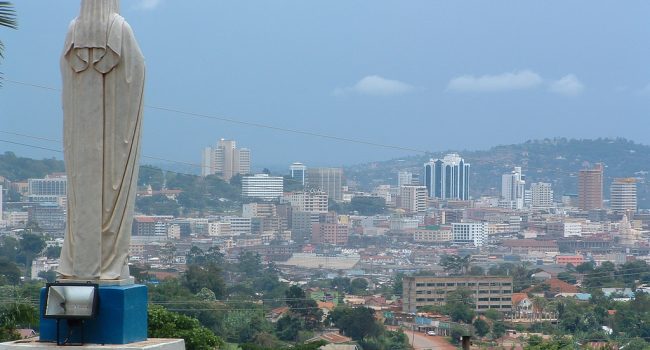
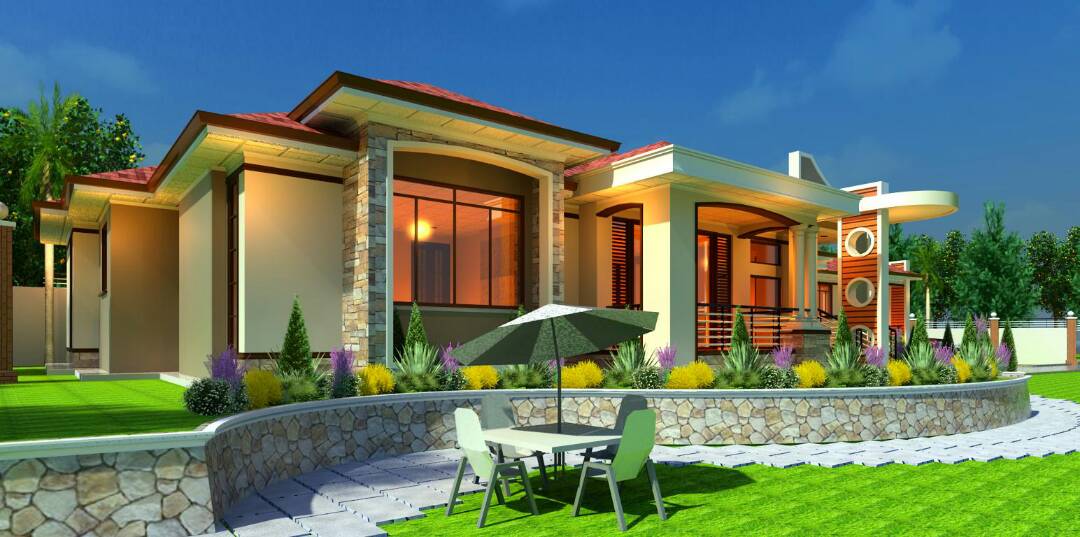
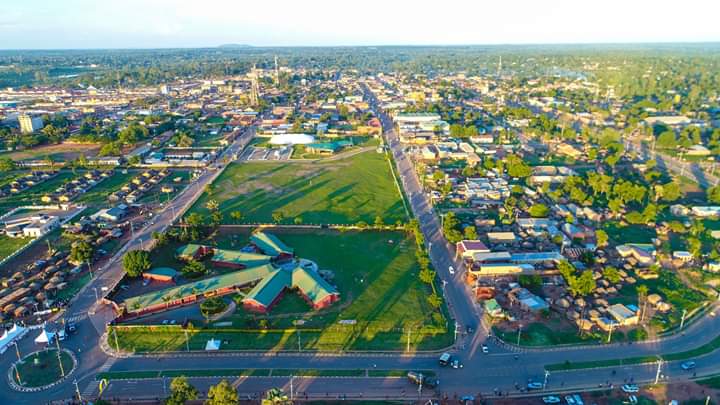
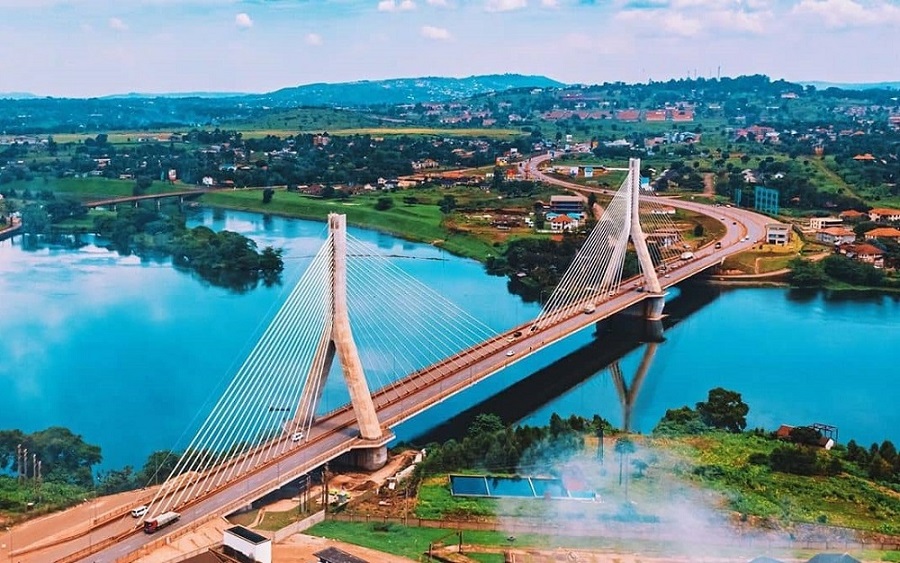
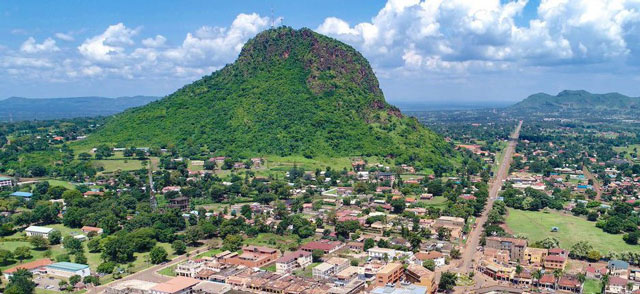


[…] If this will be your first time living in Jinja, you might be a little anxious about what to expect and if you will adjust to how people there live. Well, once you eventually do move there, you will realize that Jinja is among the best towns to live in Uganda. […]